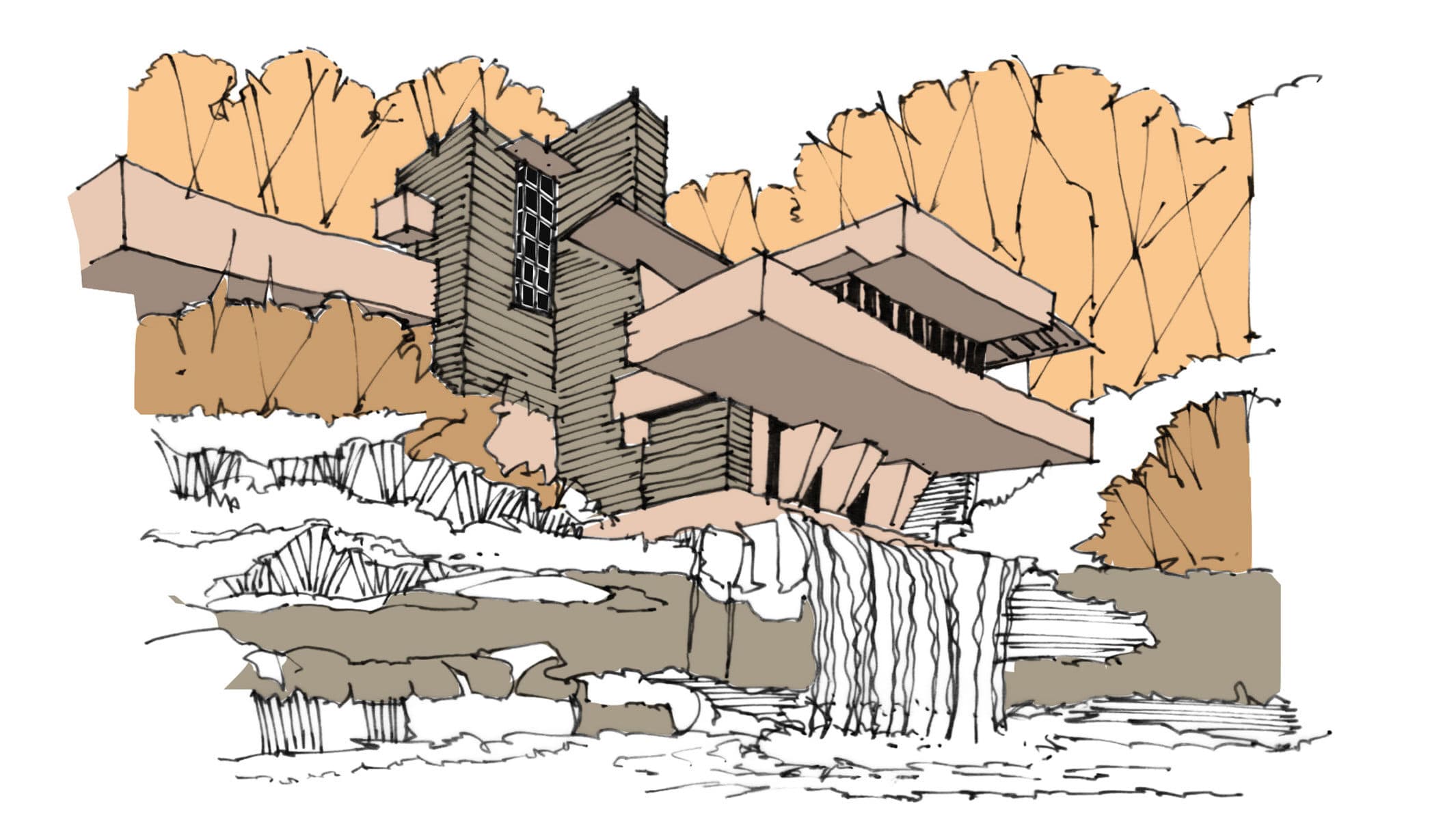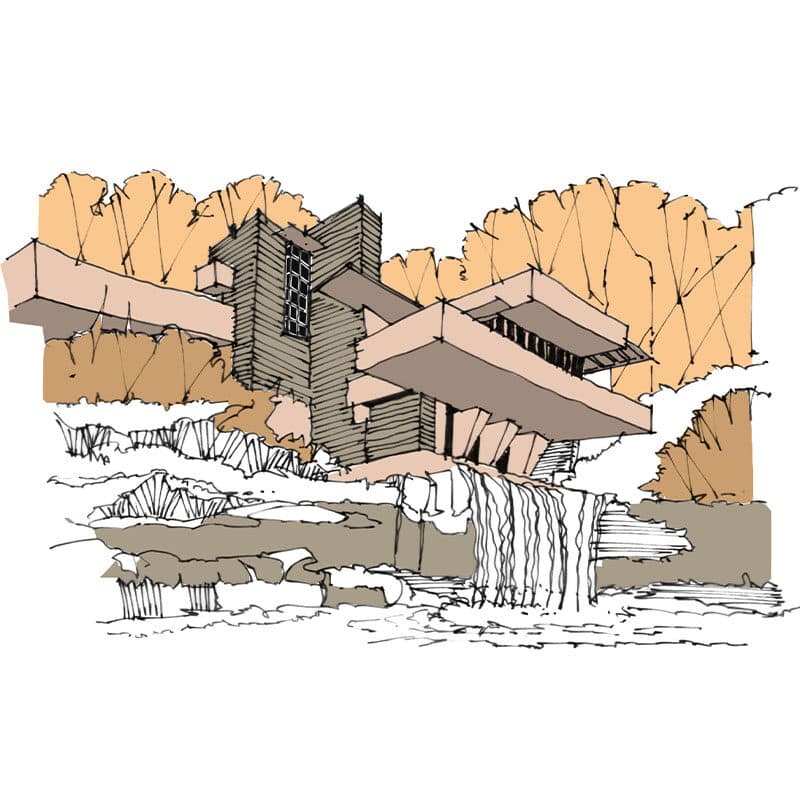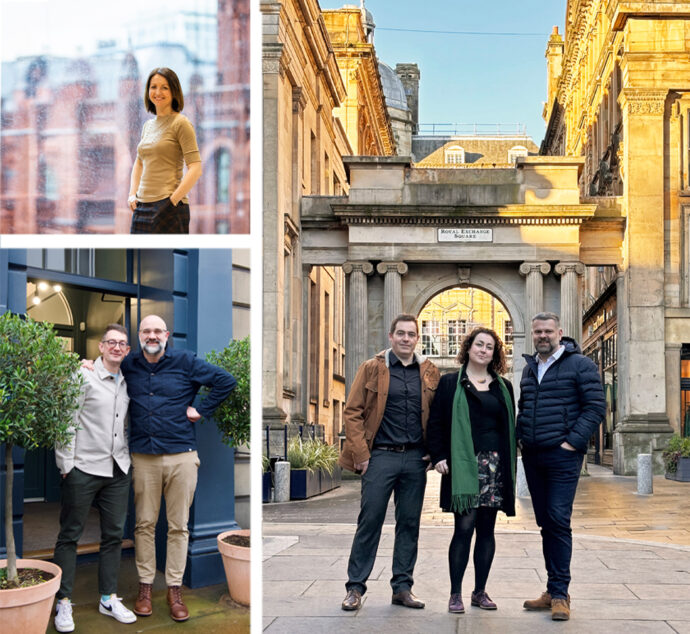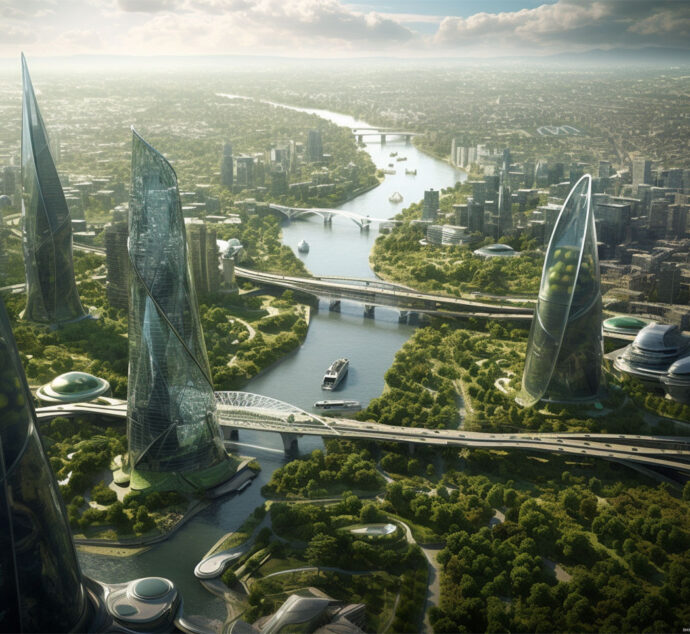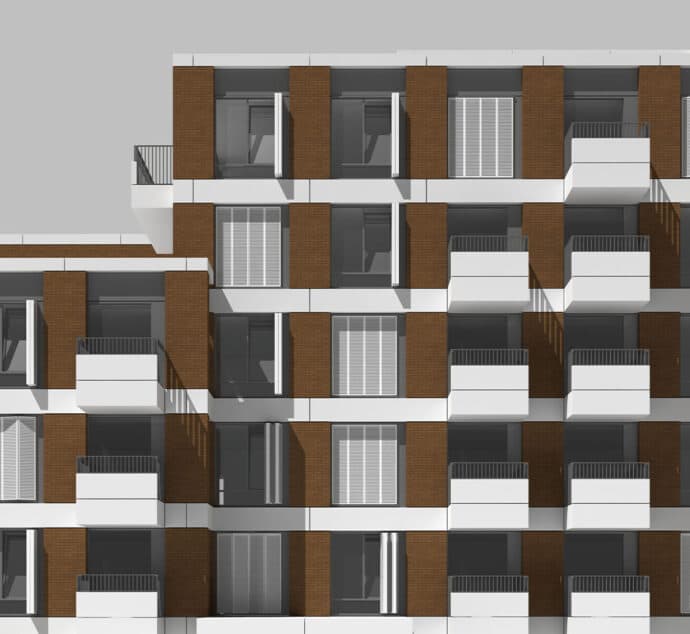For millennia, buildings and structures have provided us with shelter from the elements. They can offer security, a place to work or play and also act as a vessel for performances and events. The design language most buildings possess usually makes it very clear as to whether we are inside or outside – a simple threshold such as a wall or door or even a change in flooring material is often all it takes to confirm our whereabouts. Some of the earliest and greatest buildings throughout history have however cast doubt on this binary ‘inside’ or ‘out’.
Religious and educational buildings along with early trading markets or souks have employed architectural devices such as cloisters, colonnades and makeshift canopies to protect occupants and customers from all types of weather. The esteemed architect Frank Lloyd Wright mastered this inside-outside ambiguity by weaving his designs into the landscape allowing natural rock formations and vegetation to flow into the heart of his creations. Extravagant cantilevers and disappearing corners – as can be found in his seminal Falling Water designed in 1935 for Edgar J. Kaufmann – help blur the boundaries between nature and built form.
With the advantage of their warmer climates, most European and Asian cities allow restaurateurs and retailers the chance to spill their tables, chairs and goods out onto the streets, often employing awnings to provide temporary shelter from the glaring sun and the occasional shower. These fringe spaces not only help showcase the goods on offer but are often the most bustling and exciting areas of our high streets and town squares. Sitting outside a café in the heart of Sorrento a few weeks ago it was not long before I started to feel the rain. A retractable canopy soon covered the tables followed by the unravelling of transparent, plastic sheets as makeshift walls – one by one. A once very outside space was soon a very enclosed one.
Prior to the nationwide lockdown, the tiered Covid restrictions forced many of us to meet outdoors. Restaurants, cafés and pubs with a courtyard or garden fared much better than those without, whilst demand for patio heaters has soared accordingly. An outdoor terrace or garden is also now a high priority for those looking to move home and those that are still travelling to their respective workplaces will use any excuse to frequent their rooftop terrace – if they are fortunate enough to have access to one – or pop outside whether the space is covered or not.
But how do we define inside and outside? Once we are freed from lockdown, should there not be definitive guidelines that stipulate the allowable extent of shelter where we can once again meet? Modified shipping container destinations such as Box Park and Pop Brixton offer a variety of hybrid indoor-outdoor spaces as do transport interchanges, schools, hospitals and shopping centres. Kingly Court off Carnaby Street is covered with high level canopies for six months of the year – an outside space that is essentially in. And as for marquees? Only this week, covid-safe pods have been installed in a number of Yorkshire care homes where residents are allowed to meet visitors in a sheltered environment with openable windows and screens in place. A constant supply of clean, fresh air is now more important than ever.
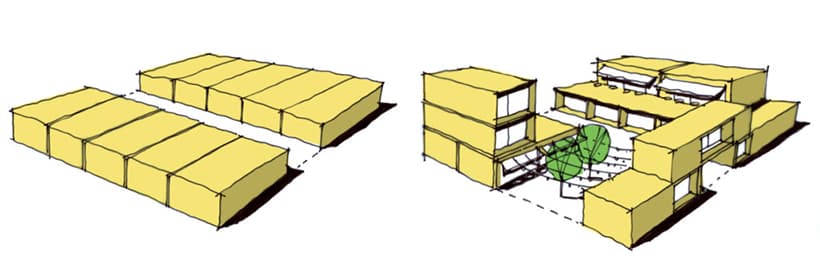
Linear modules versus interchangeable covered and semi-covered spaces.
At 3DReid we realise the importance outdoor space plays in our everyday lives whether we are at home, at work or during our hours of leisure. We are currently working with clients and end users across all sectors including hospitality, residential, commercial, aviation and rail to not only maximise outdoor space where possible but to create environments that have a positive impact on our health and wellbeing.
Successful placemaking is centred on maximising the impact of the spaces between our buildings. This is not just a landscaping opportunity, but one of enhanced engagement. Whether a place to stop and relax or the point at which people from semi-private or private buildings engage with those on the pavements and streets around them. The fringe of your building is the vital interface between outside and in and it is too rarely used to full effect.
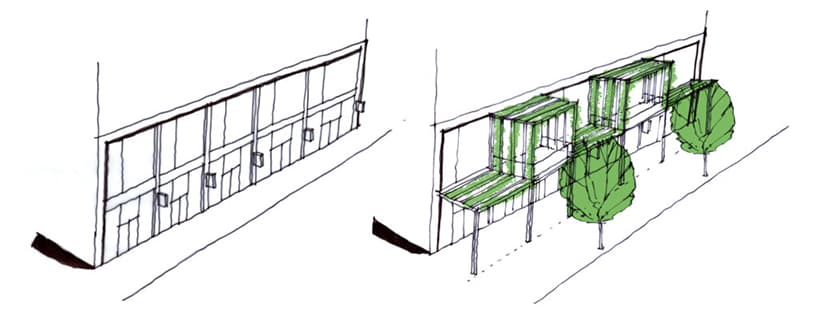
Layering building facades
Often active frontages are merely windows into an unobtainable world. Softening and blurring these hard lines of privacy can make the world more accessible, inviting and engaging. There is huge potential for the creation of flexible spaces around the edge of our buildings at ground floor to extend the tent pegs when required.

3DReid study for Adaptive Trading Modules
It is looking increasingly likely that a vaccine for Covid-19 will be ready for trialling soon, but even once the virus has subsided or is at least better controlled, perceptions regarding personal hygiene and meeting venues will have changed. Not fully outside, yet not fully in, we predict these partially enclosed, often overlooked and transient of places – the Third Space – may just become the most important dwelling places yet. So the next time you are twiddling your spaghetti around your fork or sipping that chilled glass of Chardonnay beneath a lightweight shelter or gas fired burner, do look around and ask yourself – am I inside or out?






